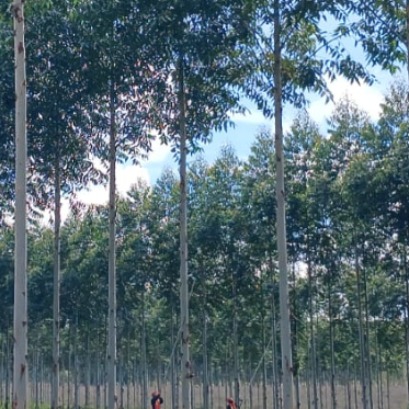
En Colombia ya se cultiva la Paulownia, el árbol más rentable del mundo
Pues a los cinco años de sembrado mide de 25 a 30 metros
En Colombia ya está disponible la Paulownia, el árbol más rentable del mundo, pues a los cinco años de sembrado mide de 25 a 30 metros, su madera es semipreciosa con múltiples aplicaciones, todas sus partes son útiles, sus hojas colaboran con la producción de oxígeno para el planeta y crece en zonas que van desde el nivel del mar hasta los 2.850 metros.
Inversionistas y campesinos encuentran en la Paulownia un excelente aliado, no solamente en términos financieros, sino en asuntos ambientales: las raíces, con una profundidad de nueve metros, recuperan suelos, son ideales para la reforestación, combaten la erosión y generan nitrógeno para el medio ambiente.
Al año de sembrada la planta produce biomasa para aglomerados y pulpa de papel. Al año y medio se pueden sacar estacones para cercas; a los dos años florece y es muy útil en la producción de miel de abejas y jalea real, todo esto aparte de la producción maderera.
Después del florecimiento, el árbol se vuelve muy atractivo a la vista y su belleza lo convierte en planta ornamental, con muchas aplicaciones en parques y edificios.

IT MAY INTEREST YOU
 Paraguay | The plantations became instruments of territorial development and the generation of decent employment, INFONA highlights.
Paraguay | The plantations became instruments of territorial development and the generation of decent employment, INFONA highlights.
Plantings in different phases, control of ants and weeds, pruning and thinning, mechanized harvest, technology applied to the field and complete integration of the production cycle were part of the CREA Forestal proposal in its Technical Update Conference – JAT Forestal 2025. The event took place on Friday, November 14, at Estancia Ñemity, located in San Juan Nepomuceno, Caazapá, where agricultural producers, technicians, contractors, students and companies in the sector met to observe the forestry business of the future in action.
 Experts cant believe it, but this tree is the oldest in the world and continues to bear fruit: it is 4,000 years old.
Experts cant believe it, but this tree is the oldest in the world and continues to bear fruit: it is 4,000 years old.
Nature keeps secrets that defy the passage of time, and one of the most surprising examples is a tree that, approximately 4,000 years old, continues to bear fruit today. This specimen has become a symbol of resistance and longevity, capable of surviving climate changes, landscape transformations and human activity itself.
 They promote research in pine resins from the NEA
They promote research in pine resins from the NEA
The forestry industry is one of the most important sectors in the economies of Misiones and Corrientes. Thousands of hectares of pine supply the paper, pulp, boards and sawmill industry. Pinus elliottii, one of the species established in the region, in addition to providing wood, is used to produce resin, a non-wood forest product with high demand in the chemical, pharmaceutical and cosmetic industries. In 2\024, resin extraction of approximately 52,6\0\0 tons was achieved from approximately 18,\0\0\0,\0\0\0 trees in production, generating income and jobs with high expansion potential.





















